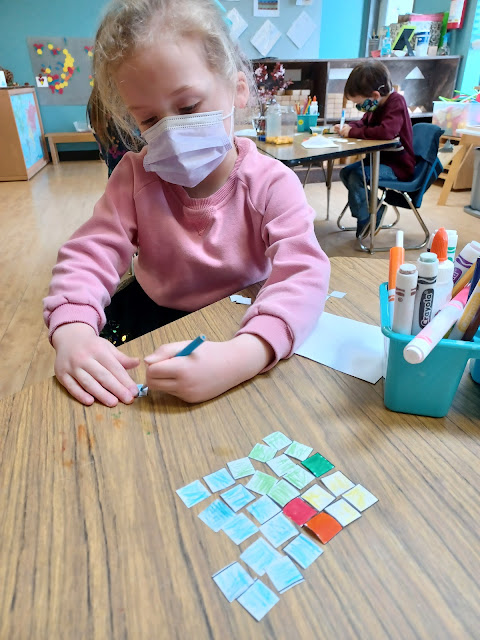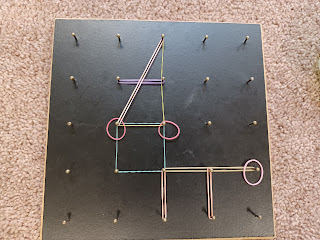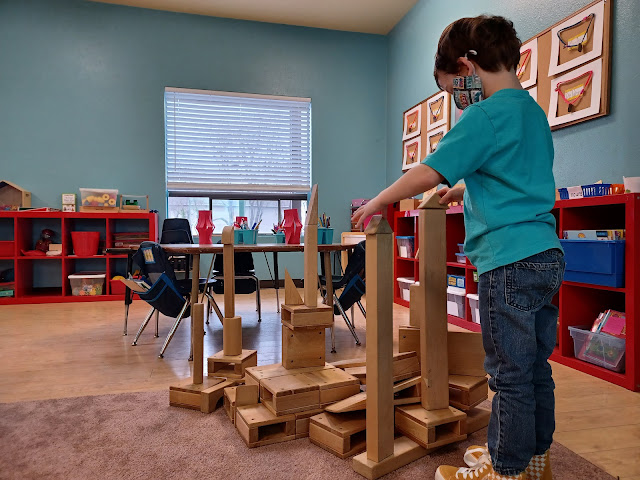 |
| The conversations were as priceless as their observations, and they seemed to move non-stop from one place to another. |
Friday, April 1, 2022
The Science Lab
Monday, March 21, 2022
Fibonacci

 |
During recess, the children look for spiral shapes in nature. |
STEAM
Somewhere else in the classroom a group might be collaborating on a racetrack, designing ramps and cars that move on the track using gravity.
 |
STEAM |
Animal Classification
Thursday, February 17, 2022
Lunar New Year
The pre-k children have been studying moon phases, the lunar calendar, and celebrating the Lunar New Year, with a focus on calligraphy, traditional stories, and cultural symbols such as dragons, lions, lanterns, the color red, and pagodas.
The children have been tracking February's moon phases using the Almanac, as seen from Tacoma. We attempted to recreate the phases with a small sphere representing Moon, a globe representing Earth, and a flashlight representing our Sun. We discussed the connection between festivals, celebrations, and the moon's phases.
We discussed dragon and lion dances and their significance. I gave them the STEM challenge: build a lion using STEM materials.
We took the opportunity to study some of the Chinese culture through folklore, learned some Chinese phrases, practiced counting to 10 in Chinese, and we even dabbled in calligraphy using one of my favorite books, Long is a Dragon, by Peggy Goldstein, for guidance.
We first worked with markers then moved on to more traditional paintbrushes.
We wrapped up the lunar celebration with red lanterns and building pagodas. The children were given the STEAM challenge: build a pagoda with materials available to you. We discussed the traditional tiered designs and the children used words such as decks, layers, floors, and stacking to describe their structures. I think they did an outstanding job of meeting the challenge!
Xin Nian Kuai le! Gōng xǐ!
The Science Lab
It's not at all a playground, it's a science lab! The children helped pull shotweed, purple dead nettles, dandelions, and Californi...

-
Patterns! Patterns everywhere ... seasonal patterns, weather patterns, grammatical patterns, numerical patterns, even patterns in how we tak...
-
It's not at all a playground, it's a science lab! The children helped pull shotweed, purple dead nettles, dandelions, and Californi...
-
We are well into our harvest season and the children have been exploring the natural world to find the Fibonacci sequence of numbers. Las...


































































